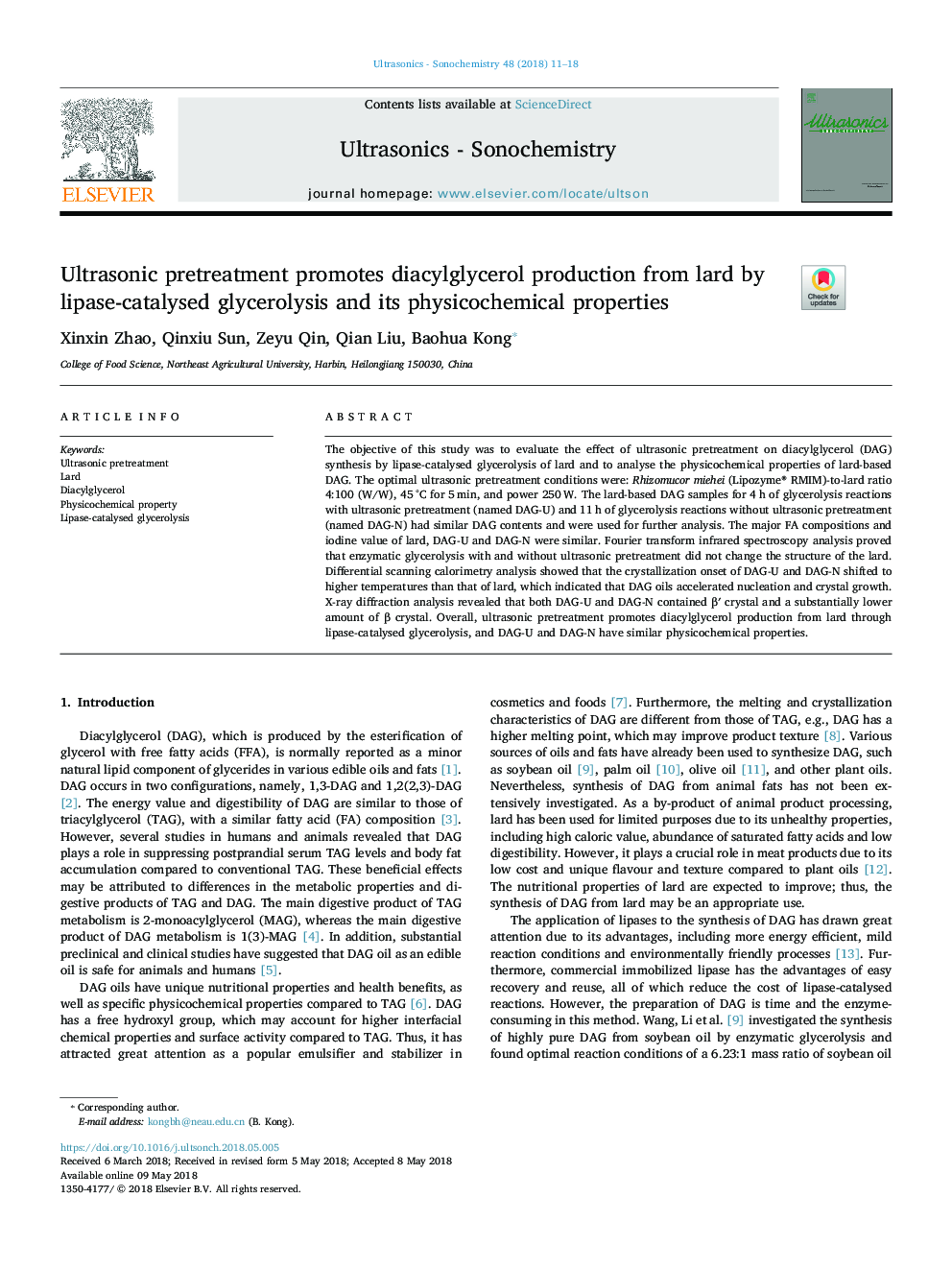| Article ID | Journal | Published Year | Pages | File Type |
|---|---|---|---|---|
| 7701986 | Ultrasonics Sonochemistry | 2018 | 8 Pages |
Abstract
The objective of this study was to evaluate the effect of ultrasonic pretreatment on diacylglycerol (DAG) synthesis by lipase-catalysed glycerolysis of lard and to analyse the physicochemical properties of lard-based DAG. The optimal ultrasonic pretreatment conditions were: Rhizomucor miehei (Lipozyme® RMIM)-to-lard ratio 4:100 (W/W), 45â¯Â°C for 5â¯min, and power 250â¯W. The lard-based DAG samples for 4â¯h of glycerolysis reactions with ultrasonic pretreatment (named DAG-U) and 11â¯h of glycerolysis reactions without ultrasonic pretreatment (named DAG-N) had similar DAG contents and were used for further analysis. The major FA compositions and iodine value of lard, DAG-U and DAG-N were similar. Fourier transform infrared spectroscopy analysis proved that enzymatic glycerolysis with and without ultrasonic pretreatment did not change the structure of the lard. Differential scanning calorimetry analysis showed that the crystallization onset of DAG-U and DAG-N shifted to higher temperatures than that of lard, which indicated that DAG oils accelerated nucleation and crystal growth. X-ray diffraction analysis revealed that both DAG-U and DAG-N contained βⲠcrystal and a substantially lower amount of β crystal. Overall, ultrasonic pretreatment promotes diacylglycerol production from lard through lipase-catalysed glycerolysis, and DAG-U and DAG-N have similar physicochemical properties.
Related Topics
Physical Sciences and Engineering
Chemistry
Chemistry (General)
Authors
Xinxin Zhao, Qinxiu Sun, Zeyu Qin, Qian Liu, Baohua Kong,
